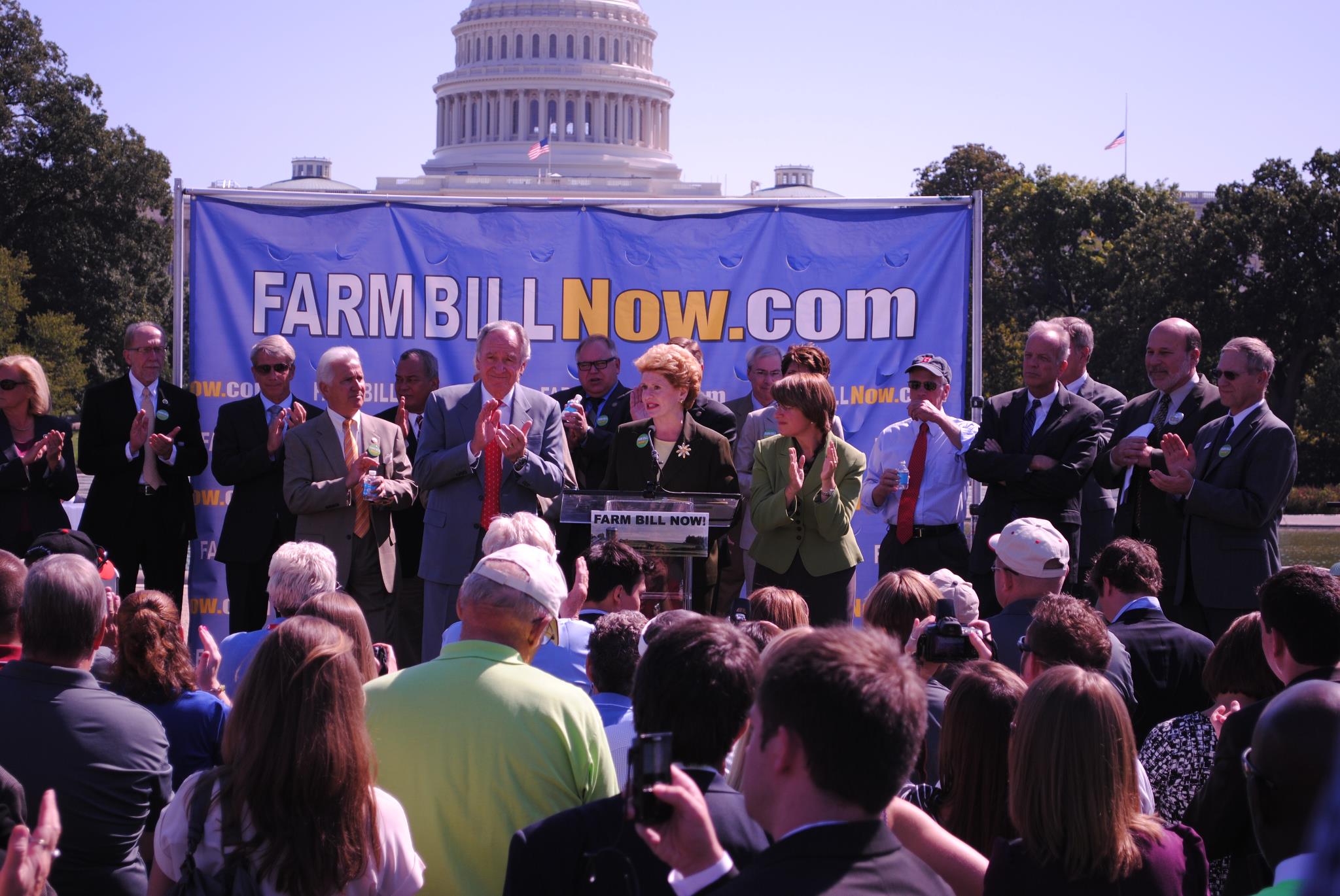Farm Bill Withers on the Vine
Author: Kate Fitzgerald
Congress will leave Washington last week and not return until November 13 – after the election. They leave without completing a new Farm Bill, without passing an extension of the current bill, and without passing disaster assistance to the farmers hurt by this summer’s record drought and high temperatures.
It looked for a while as though the Farm Bill could be the exception to the partisan stalemate that has stymied the 113th Congress, but finally the House leadership decided not to bring the bill to the floor. Members of the House and Senate will return to their districts this week and take to the hustings, not returning to Washington, DC until November 13, after the election.
 The current law will expire on September 30, and contrary to the dire warnings advocates used to try to goad lawmakers into action, it will appear to many as thought not much has changed on the morning of October 1. But several key programs for building healthy and vibrant food systems will start 2013 without funding and will officially cease to exist. Reinstating them will be a top priority when Congress returns for the “lame duck” session in November.
The current law will expire on September 30, and contrary to the dire warnings advocates used to try to goad lawmakers into action, it will appear to many as thought not much has changed on the morning of October 1. But several key programs for building healthy and vibrant food systems will start 2013 without funding and will officially cease to exist. Reinstating them will be a top priority when Congress returns for the “lame duck” session in November.
The lion’s share of USDA funding (about 70%) goes to the Supplemental Nutrition Assistance Program (SNAP) and it will continue to operate unchanged. SNAP is an “entitlement” program and although its rules can be modified by Farm Bills it functions independently. Its funding level responds to demand and does not need to be authorized and appropriated. (Unlike the WIC program, which must have funds appropriated to it every year.)
Most commodity programs are structured around crop planting and harvesting cycles rather than fiscal calendars, and the winter wheat harvest next spring will be the first time farmers will be directly affected by the lack of a Farm Bill. Dairy is a separate case and functions under the most complex of the farm support programs. Support through the current program dropped on September 1 and dairy farmers are being additionally squeezed by high prices for feed. Both the House and Senate farm bills include a complete restructuring of the national dairy program, and something will have to be done for those farmers before the end of the calendar year.

FarmBillNow.com
The largest conservation programs, the Conservation Reserve Program is a permanent program unaffected by the lapse of this Farm Bill. Since other conservation programs support longterm improvements to working lands, most of them are implemented through several-year contracts between the government and farmers, and their loss will begin to be felt when current contracts expire. However, the lack of a Farm Bill and reduced funding through appropriations will mean that there will not be funding to implement good land stewardship practices on new land this year.
The immediate impact of Congress’s failure to act means that several key nutrition, organic, rural development, and marketing programs that are commonly used to help build sustainable, regional food systems will officially cease to exist when their authority expires at the end of September. Although these programs account for a tiny amount of total USDA spending, they have played an outsized role in developing sustainable regional food system efforts. (Click here for a list of the programs that expire) Many of these programs are very popular (Senior Farmers Market Nutrition Program) and were reauthorized, and some, such as the Farmers Market Promotion Program were even expanded and given increased funding in both the Senate and House versions of the Farm Bill. These 37 programs will go dormant for now but can come back to life should Congress pass a bill in the lame duck session.
The Farm Bill’s progress through the House of Representatives was slowed by rifts within the GOP around how much to cut from farm and nutrition programs. Although the bill passed out of the House Agriculture Committee on a bipartisan vote, many House Republicans felt that the cuts to SNAP ($16 billion over ten years) and commodity programs ($14 billion) were not enough.
Congress will have many matters to take up when it returns to D.C. after the election, principally the so-called “fiscal cliff”, the tax issues, Medicare doctor reimbursement rates, and looming across- the- board cuts (known as sequestration) set to kick-in on January 2, 2013. There will be enormous pressure to avoid sequestration (which cuts about 8.2% from most Federal spending, including to the Defense Department) and instead pass some collection of measures that will show that Congress is serious about deficit reduction while not derailing the fragile economic recovery. Since both the Senate and House Agriculture Committee-passed Farm Bills include multi-billion dollar savings over the next ten years, they could be welcome additions to a larger budget deal.







